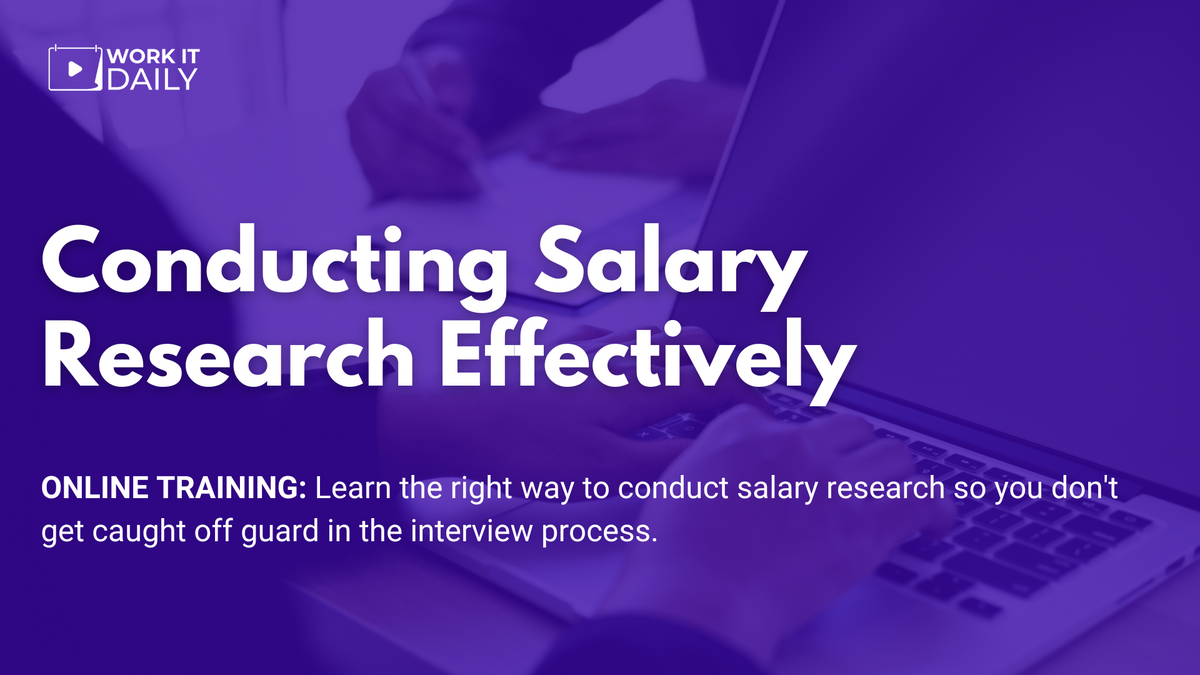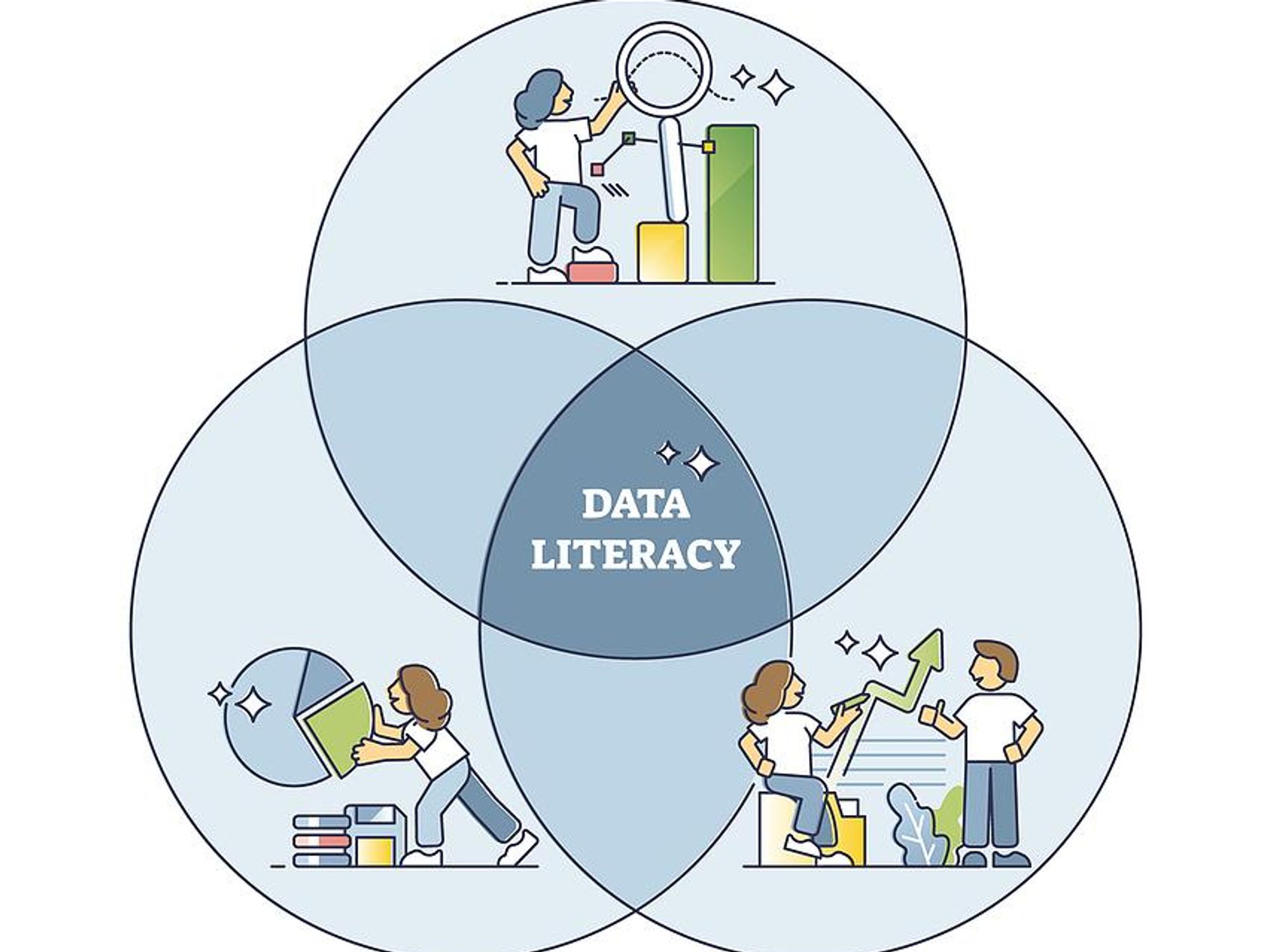
How To Make The Shift From Data Literacy To Data Analytics Literacy
 iStock
{"adCodes": [{"desktop": "\u003cdiv class=\u0027rblad-wit_content\u0027\u003e\u003c/div\u003e", "display": true, "mobile": "\u003cdiv class=\u0027rblad-wit_content\u0027\u003e\u003c/div\u003e", "new_amp": "\u003camp-ad width=336 height=280\n type=\"doubleclick\"\n data-slot=\"/22278042776,22664312254/wit/wit_content\"\n data-multi-size=\"300x250\"\u003e\n\u003c/amp-ad\u003e", "order": 0, "tablet": "\u003cdiv class=\u0027rblad-wit_content\u0027\u003e\u003c/div\u003e"}, {"desktop": "\u003cdiv class=\u0027rblad-wit_content\u0027\u003e\u003c/div\u003e", "display": true, "mobile": "\u003cdiv class=\u0027rblad-wit_content\u0027\u003e\u003c/div\u003e", "new_amp": "\u003camp-ad width=336 height=280\n type=\"doubleclick\"\n data-slot=\"/22278042776,22664312254/wit/wit_content\"\n data-multi-size=\"300x250\"\u003e\n\u003c/amp-ad\u003e", "order": 1, "tablet": "\u003cdiv class=\u0027rblad-wit_content\u0027\u003e\u003c/div\u003e"}, {"desktop": "\u003cdiv class=\u0027rblad-wit_content\u0027\u003e\u003c/div\u003e", "display": true, "mobile": "\u003cdiv class=\u0027rblad-wit_content\u0027\u003e\u003c/div\u003e", "new_amp": "\u003camp-ad width=336 height=280\n type=\"doubleclick\"\n data-slot=\"/22278042776,22664312254/wit/wit_content\"\n data-multi-size=\"300x250\"\u003e\n\u003c/amp-ad\u003e", "order": 2, "tablet": "\u003cdiv class=\u0027rblad-wit_content\u0027\u003e\u003c/div\u003e"}], "adsOrder": [2]}
One of the pillars of an exemplary data management and governance program is data literacy. Organizations often assume that their executives or data users are not data literate and don't understand how to ensure data is of quality and how everyone has a role in creating and managing data. Internal branding about how data helps management make better decisions has been around for a decade. But to go from data to information and knowledge, data literacy is not enough for the clients of data analytics practitioners. Business data analytics users need accurate multi-disciplinary skills to ask themselves what the data tells us and where and how these insights can be applied.
iStock
{"adCodes": [{"desktop": "\u003cdiv class=\u0027rblad-wit_content\u0027\u003e\u003c/div\u003e", "display": true, "mobile": "\u003cdiv class=\u0027rblad-wit_content\u0027\u003e\u003c/div\u003e", "new_amp": "\u003camp-ad width=336 height=280\n type=\"doubleclick\"\n data-slot=\"/22278042776,22664312254/wit/wit_content\"\n data-multi-size=\"300x250\"\u003e\n\u003c/amp-ad\u003e", "order": 0, "tablet": "\u003cdiv class=\u0027rblad-wit_content\u0027\u003e\u003c/div\u003e"}, {"desktop": "\u003cdiv class=\u0027rblad-wit_content\u0027\u003e\u003c/div\u003e", "display": true, "mobile": "\u003cdiv class=\u0027rblad-wit_content\u0027\u003e\u003c/div\u003e", "new_amp": "\u003camp-ad width=336 height=280\n type=\"doubleclick\"\n data-slot=\"/22278042776,22664312254/wit/wit_content\"\n data-multi-size=\"300x250\"\u003e\n\u003c/amp-ad\u003e", "order": 1, "tablet": "\u003cdiv class=\u0027rblad-wit_content\u0027\u003e\u003c/div\u003e"}, {"desktop": "\u003cdiv class=\u0027rblad-wit_content\u0027\u003e\u003c/div\u003e", "display": true, "mobile": "\u003cdiv class=\u0027rblad-wit_content\u0027\u003e\u003c/div\u003e", "new_amp": "\u003camp-ad width=336 height=280\n type=\"doubleclick\"\n data-slot=\"/22278042776,22664312254/wit/wit_content\"\n data-multi-size=\"300x250\"\u003e\n\u003c/amp-ad\u003e", "order": 2, "tablet": "\u003cdiv class=\u0027rblad-wit_content\u0027\u003e\u003c/div\u003e"}], "adsOrder": [2]}
One of the pillars of an exemplary data management and governance program is data literacy. Organizations often assume that their executives or data users are not data literate and don't understand how to ensure data is of quality and how everyone has a role in creating and managing data. Internal branding about how data helps management make better decisions has been around for a decade. But to go from data to information and knowledge, data literacy is not enough for the clients of data analytics practitioners. Business data analytics users need accurate multi-disciplinary skills to ask themselves what the data tells us and where and how these insights can be applied.Some firms will launch a simple branding campaign that says, "What does the data tell us?" or "Listen to the data." While doing something is better than nothing, we would like to think rightfully or wrongly so that in 2022 most organizations are beyond this approach.
In this post, I posit that data literacy programs need a bit of a reset, given the current point of view on data literacy existed coming out of the age of business intelligence. In the age of AI, self-service analytics, and digital customer experience, what goes into a data literacy program needs to be reset, and the view of what users know about data and analytics needs to be reframed.
The Data Literacy Programs Of Yesteryear And Many Still Contain...
Bigstock
A curriculum that starts with, well, data is the currency of the times. It is the oil or glue that holds an organization together. Therefore, it is a strategic asset we must ensure is of quality, well-curated, and created correctly. These programs will then show how data is made, hopefully with examples/use cases from their business.
For instance, they will give a flow diagram of a customer service representative onboarding a customer and creating the initial customer record to show how an account should be set up and what happens if incorrect information is entered, or if the information is not filled in and left incomplete what that does to the ability to market and communicate with the customer.
This reminds me of Saturday morning cartoons I watched as a kid, where we learned about how a bill becomes a law. "I am only a bill sitting on capitol hill." While this is a valid use case from talking with business stakeholders, it borders on insulting as most people in their consumer life are engaging with a virtual assistant such as Alexa, wearing a smartwatch or tracking device such as an Apple Watch or a Fitbit, and using apps or other tools in their daily lives. Algorithms are everywhere, and people know them, and businesspeople know them as well. They understand what data is and how it drives consumer interactions. Many business stakeholders use operational dashboards and other data visualizations to run their businesses or departments. So, if we are ever to get into the world of insights to action and adaptive intelligence that industry researchers discuss, we need to go much further than using account setup examples. New examples such as how data analytics powers the guidance and advice advisors in a firm give customers through insight. Or how recommendation engines power next best actions which are sent to digital applications in real time are more modern relevant data analytics examples.
So, the time has come to rebrand data literacy, data analytics literacy so we can get more signals and patterns from the data we are collecting and move into improved decision-making.
So, What Is The Data Analytics Literacy Curriculum Of The Future Then?
Bigstock
I recommend that in the spirit of test and learn and lean start-up/design thinking; the firm develops a vehicle to assess what their audience knows: briefly, whether that is a survey and focus group or playing a fun game (like jeopardy or other skill-based assessment) to assess the knowledge and maturity level that can help you develop a new curriculum.
Using the outcome of the assessment above combined with the five critical focus areas I am proposing below can help set the stage for a world-class modern data analytics literacy program. The program could include:
1. Data Fundamentals: What are the components of master data management? Quality, governed, gold standard data. This includes a description of the business benefits of governing data and clearly explains the importance of domains such as lineage, business definitions, and the data catalog.
2. How Data Turns into Information and Knowledge. What platforms are required, and why do business users need to understand these fit-for-purpose platforms?
a. What are the benefits of cloud-based platforms, data lakes, or lake houses, and what data science workbenches do, as well as self-service analytics, and why are these tools important? Why should the firm invest in these?
b. Business users should appreciate data Infrastructure-as-a-Service and managed cloud data warehouse such as Snowflake and what they can do to improve end-user access and protect privacy. What is the difference between structured and unstructured data and how data models and platforms may be different depending on the data structure in question?
c. Digital, Marketing Automation, and CRM Fundamentals and Platforms. An appreciation of real-time decisioning and omnichannel customer engagement including how data analytics informs customer conversations, lead targeting and qualification, and overall knowing the customer.
3. Lean Start-Up and Design Thinking. Fundamentals of design thinking, test and learn, control groups, and how to measure the success of tests—quantitative and quantitative research. Why is it essential to create a baseline, and how do you set up good KPIs to improve performance?
4. Analytics Fundamentals. Starting with the importance of defining what business problem you are trying to solve and then moving to select the proper analytics methodologies. Go to market analytics, segmentation, and a basic overview of the types of analytics, from descriptive to predictive. Program-related analytics and measurement, customer lifetime value, and engagement. As a consumer of analytics, the businessperson should have a basic understanding of how specific analytics solve business problems. Depending on the firm and industry the types of potential analytics should be listed and explained in the context of potential application to help solve business problems. For example, if you are in a digital business, digital analytics and digital signals to sales and how you measure SEM/SEO should be discussed. If you are in a retail business, site placement and drive time analytics should be reviewed. If you are managing risk, transaction scoring and analysis using deep learning should be reviewed. If you are in a large consumer business with lots of cross-selling, various marketing analytics should be reviewed. Consider establishing a baseline through certifications such as INFORMS CAP.
5. AI and Data Science Fundamentals. Explain the difference between how statisticians think versus data scientists. How does machine learning enable AI applications? The types of AI and how to work with data scientists. What are good questions for data scientists when building statistically oriented products and services for you? How do you know the model or tool is good and working correctly? What are the various types of models that can be built and what do they solve?
Given we are now in 2022, it is time to upskill and move to data analytics literacy. I recommend that some type of handbook be developed for the above and the course also be available through video training and updated at least annually. Also, consider a modular approach to the curriculum design where you define the categories and then can keep adding topics and use cases. This program is a dynamic living breathing program and not a point-in-time project.
In summary, these five areas will help business users of data analytics drive more impact with insights through understanding what is possible with the applications and use cases of data analytics. These five areas are not the only ones, and I would like to hear from the readers of this newsletter about what domains or subjects could be added to this curriculum.
I look forward to hearing your thoughts on whether the time for this reset has come in the way data literacy programs are approached. Also please share any success stories or changes you are seeing in the marketplace. What has your experience been with these programs? Are you using any third parties or consultants to set these up? What role do HR and internal education teams play in designing and enabling these curricula?
From Your Site Articles- Chief Data Analytics Officer (CDAO): From Mindsets To Skills - Work ... ›
- The Important Steps Toward Achieving Data Governance - Work It ... ›
- How To Get Management Feeling Safe With Data In The Cloud ... ›
- Data Strategy Is More Important Than Ever In An Age Of AI - Work It ... ›
- Top 5 Questions To Answer To Get Your Data Strategy Right - Work ... ›
- A Successful Path To Data Literacy And Analytics Maturity For All ›
- What is data literacy? - Definition from WhatIs.com ›
- Building AI Leadership Brain Trust: Why Is Data Analytics Literacy ... ›
 {"adCodes": [{"desktop": "\u003cdiv class=\u0027rblad-wit_content\u0027\u003e\u003c/div\u003e", "display": true, "mobile": "\u003cdiv class=\u0027rblad-wit_content\u0027\u003e\u003c/div\u003e", "new_amp": "\u003camp-ad width=336 height=280\n type=\"doubleclick\"\n data-slot=\"/22278042776,22664312254/wit/wit_content\"\n data-multi-size=\"300x250\"\u003e\n\u003c/amp-ad\u003e", "order": 0, "tablet": "\u003cdiv class=\u0027rblad-wit_content\u0027\u003e\u003c/div\u003e"}, {"desktop": "\u003cdiv class=\u0027rblad-wit_content\u0027\u003e\u003c/div\u003e", "display": true, "mobile": "\u003cdiv class=\u0027rblad-wit_content\u0027\u003e\u003c/div\u003e", "new_amp": "\u003camp-ad width=336 height=280\n type=\"doubleclick\"\n data-slot=\"/22278042776,22664312254/wit/wit_content\"\n data-multi-size=\"300x250\"\u003e\n\u003c/amp-ad\u003e", "order": 1, "tablet": "\u003cdiv class=\u0027rblad-wit_content\u0027\u003e\u003c/div\u003e"}, {"desktop": "\u003cdiv class=\u0027rblad-wit_content\u0027\u003e\u003c/div\u003e", "display": true, "mobile": "\u003cdiv class=\u0027rblad-wit_content\u0027\u003e\u003c/div\u003e", "new_amp": "\u003camp-ad width=336 height=280\n type=\"doubleclick\"\n data-slot=\"/22278042776,22664312254/wit/wit_content\"\n data-multi-size=\"300x250\"\u003e\n\u003c/amp-ad\u003e", "order": 2, "tablet": "\u003cdiv class=\u0027rblad-wit_content\u0027\u003e\u003c/div\u003e"}], "adsOrder": [2]}
{"adCodes": [{"desktop": "\u003cdiv class=\u0027rblad-wit_content\u0027\u003e\u003c/div\u003e", "display": true, "mobile": "\u003cdiv class=\u0027rblad-wit_content\u0027\u003e\u003c/div\u003e", "new_amp": "\u003camp-ad width=336 height=280\n type=\"doubleclick\"\n data-slot=\"/22278042776,22664312254/wit/wit_content\"\n data-multi-size=\"300x250\"\u003e\n\u003c/amp-ad\u003e", "order": 0, "tablet": "\u003cdiv class=\u0027rblad-wit_content\u0027\u003e\u003c/div\u003e"}, {"desktop": "\u003cdiv class=\u0027rblad-wit_content\u0027\u003e\u003c/div\u003e", "display": true, "mobile": "\u003cdiv class=\u0027rblad-wit_content\u0027\u003e\u003c/div\u003e", "new_amp": "\u003camp-ad width=336 height=280\n type=\"doubleclick\"\n data-slot=\"/22278042776,22664312254/wit/wit_content\"\n data-multi-size=\"300x250\"\u003e\n\u003c/amp-ad\u003e", "order": 1, "tablet": "\u003cdiv class=\u0027rblad-wit_content\u0027\u003e\u003c/div\u003e"}, {"desktop": "\u003cdiv class=\u0027rblad-wit_content\u0027\u003e\u003c/div\u003e", "display": true, "mobile": "\u003cdiv class=\u0027rblad-wit_content\u0027\u003e\u003c/div\u003e", "new_amp": "\u003camp-ad width=336 height=280\n type=\"doubleclick\"\n data-slot=\"/22278042776,22664312254/wit/wit_content\"\n data-multi-size=\"300x250\"\u003e\n\u003c/amp-ad\u003e", "order": 2, "tablet": "\u003cdiv class=\u0027rblad-wit_content\u0027\u003e\u003c/div\u003e"}], "adsOrder": [2]}
Have you interviewed for a job and got caught off guard with the salary question? Do you struggle to identify a reasonable salary range that you feel comfortable with? If so, we're here to show you the right way to conduct salary research!
These days, the hiring manager or recruiter will most likely ask about your salary expectations in the first or early round of the interview process. If you aren’t ready for this conversation, it can make you look unprepared, diffident, or worse….costing you the entire job opportunity.
So, let's show you how to avoid that and talk about your desired salary with confidence!
In this training, you’ll learn how to:
- Figure out the correct sites to explore while doing salary research
- Identify the tools you need to figure out your market value
- Choose a salary range that you feel comfortable with
Join our CEO, J.T. O'Donnell, and Director of Training Development & Coaching, Christina Burgio, for this live event on Wednesday, September 28th at 12 pm ET.
CAN'T ATTEND LIVE? That's okay. You'll have access to the recording and the workbook after the session!
 Read moreShow lesssalary research
{"customDimensions": {"1":"Jenna Arcand","3":"live events, career events, j.t. o'donnell, jt o'donnell, christina burgio, career advice, career, career growth, professionals, job search, job seekers, job interview, job search tips, job search advice, salary, salary research, conducting salary research, researching salary, job salary, salary range, salary requirements, how to conduct salary research, interview, job interview tips, interview tips, salary expectations, ~rmsc:rebelmouse-image:31700834, ~rmsc:rebelmouse-image:31704571, ~rmsc:rebelmouse-image:30319455","2":"cover-letter","4":"09/23/2022"}, "post": {"split_testing": {}, "providerId": 0, "sections": [0, 376490081, 562457120, 370480899, 376489574, 376489962, 404327439, 376489624, 479660731, 543270555, 473310813, 473333499], "buckets": [], "authors": [19836096]} }
Read moreShow lesssalary research
{"customDimensions": {"1":"Jenna Arcand","3":"live events, career events, j.t. o'donnell, jt o'donnell, christina burgio, career advice, career, career growth, professionals, job search, job seekers, job interview, job search tips, job search advice, salary, salary research, conducting salary research, researching salary, job salary, salary range, salary requirements, how to conduct salary research, interview, job interview tips, interview tips, salary expectations, ~rmsc:rebelmouse-image:31700834, ~rmsc:rebelmouse-image:31704571, ~rmsc:rebelmouse-image:30319455","2":"cover-letter","4":"09/23/2022"}, "post": {"split_testing": {}, "providerId": 0, "sections": [0, 376490081, 562457120, 370480899, 376489574, 376489962, 404327439, 376489624, 479660731, 543270555, 473310813, 473333499], "buckets": [], "authors": [19836096]} }
 Bigstock
{"adCodes": [{"desktop": "\u003cdiv class=\u0027rblad-wit_content\u0027\u003e\u003c/div\u003e", "display": true, "mobile": "\u003cdiv class=\u0027rblad-wit_content\u0027\u003e\u003c/div\u003e", "new_amp": "\u003camp-ad width=336 height=280\n type=\"doubleclick\"\n data-slot=\"/22278042776,22664312254/wit/wit_content\"\n data-multi-size=\"300x250\"\u003e\n\u003c/amp-ad\u003e", "order": 0, "tablet": "\u003cdiv class=\u0027rblad-wit_content\u0027\u003e\u003c/div\u003e"}, {"desktop": "\u003cdiv class=\u0027rblad-wit_content\u0027\u003e\u003c/div\u003e", "display": true, "mobile": "\u003cdiv class=\u0027rblad-wit_content\u0027\u003e\u003c/div\u003e", "new_amp": "\u003camp-ad width=336 height=280\n type=\"doubleclick\"\n data-slot=\"/22278042776,22664312254/wit/wit_content\"\n data-multi-size=\"300x250\"\u003e\n\u003c/amp-ad\u003e", "order": 1, "tablet": "\u003cdiv class=\u0027rblad-wit_content\u0027\u003e\u003c/div\u003e"}, {"desktop": "\u003cdiv class=\u0027rblad-wit_content\u0027\u003e\u003c/div\u003e", "display": true, "mobile": "\u003cdiv class=\u0027rblad-wit_content\u0027\u003e\u003c/div\u003e", "new_amp": "\u003camp-ad width=336 height=280\n type=\"doubleclick\"\n data-slot=\"/22278042776,22664312254/wit/wit_content\"\n data-multi-size=\"300x250\"\u003e\n\u003c/amp-ad\u003e", "order": 2, "tablet": "\u003cdiv class=\u0027rblad-wit_content\u0027\u003e\u003c/div\u003e"}], "adsOrder": [2]}
Bigstock
{"adCodes": [{"desktop": "\u003cdiv class=\u0027rblad-wit_content\u0027\u003e\u003c/div\u003e", "display": true, "mobile": "\u003cdiv class=\u0027rblad-wit_content\u0027\u003e\u003c/div\u003e", "new_amp": "\u003camp-ad width=336 height=280\n type=\"doubleclick\"\n data-slot=\"/22278042776,22664312254/wit/wit_content\"\n data-multi-size=\"300x250\"\u003e\n\u003c/amp-ad\u003e", "order": 0, "tablet": "\u003cdiv class=\u0027rblad-wit_content\u0027\u003e\u003c/div\u003e"}, {"desktop": "\u003cdiv class=\u0027rblad-wit_content\u0027\u003e\u003c/div\u003e", "display": true, "mobile": "\u003cdiv class=\u0027rblad-wit_content\u0027\u003e\u003c/div\u003e", "new_amp": "\u003camp-ad width=336 height=280\n type=\"doubleclick\"\n data-slot=\"/22278042776,22664312254/wit/wit_content\"\n data-multi-size=\"300x250\"\u003e\n\u003c/amp-ad\u003e", "order": 1, "tablet": "\u003cdiv class=\u0027rblad-wit_content\u0027\u003e\u003c/div\u003e"}, {"desktop": "\u003cdiv class=\u0027rblad-wit_content\u0027\u003e\u003c/div\u003e", "display": true, "mobile": "\u003cdiv class=\u0027rblad-wit_content\u0027\u003e\u003c/div\u003e", "new_amp": "\u003camp-ad width=336 height=280\n type=\"doubleclick\"\n data-slot=\"/22278042776,22664312254/wit/wit_content\"\n data-multi-size=\"300x250\"\u003e\n\u003c/amp-ad\u003e", "order": 2, "tablet": "\u003cdiv class=\u0027rblad-wit_content\u0027\u003e\u003c/div\u003e"}], "adsOrder": [2]}
Within the United States, many state departments of education are lowering teacher certification requirements to meet the demands of the current teacher shortage. In New Jersey, for example, aspiring educators no longer need to take PRAXIS exams. In Arizona, people are now allowed to teach in school with just a high school diploma (and current enrollment in university). In New Mexico, the National Guard has been activated as substitute teachers.
As a teacher coach, I support the development of many types of educators—those trained in traditional university school programs and those who participated in alternative route pathways. I, myself, was an alternate route teaching candidate who took certification courses on nights/weekends in New Jersey. While I am now able to pay it forward by mentoring new educators, it did take several years of me teaching students to gain my “sea legs” in the trade. As a result, I do sometimes wonder if I was able to fully support those first few cohorts of students whom I taught. I also know, however, that even going through formal university teaching programs is no guarantor of success in teaching as all new teachers must adapt to the local school community and cultural conditions where they work.
The recruitment and retention of quality teachers is, therefore, a topic of much importance. Because I assume that others in education also see this situation as a five-alarm fire, I decided to ask education industry leaders, including those in other industrialized nations, if they agree or disagree with the easing of teacher certification requirements, and how we might best retain the teachers we already have. Here are their thoughts:
American Association Of Colleges For Teacher Education (AACTE) Bigstock
BigstockDr. Jacqueline Rodriguez
Vice President for Research, Policy & Advocacy
According to a 2019 report from the Economic Policy Institute, “The teacher shortage is real, large and growing, and worse than we thought.” There have been consistent needs in areas like ESL, special education, and STEM for many years. Post-pandemic, the teaching profession has experienced a massive upheaval. We are now seeing shortages of fully licensed and credentialed educators across all disciplines and all communities.
In response to the shortage of profession-ready educators, states are lowering standards for entry into the profession and schools are hiring people with emergency or provisional licenses who are not fully prepared to enter the classroom and meet the academic or social/emotional needs of our K-12 students. These practices are antithetical to the profession that builds all other professions, the national economy, and the security of the nation.
Bottom line: Every parent wants their child in a classroom led by someone who knows how to teach and how children learn. Lowering certification requirements endangers children’s learning and their future life outcomes. It also creates increased churn in the educator workforce, causing districts to spend more money to fill shortages in the future. We are already witnessing the never-ending cycle of replacing unprepared people with more unprepared people.
Recruiting and retaining high-quality educators for the teaching profession has become more difficult as the teaching talent pool is attracted to other occupations with higher salaries, better working conditions, and more respect. By addressing compensation and treating teachers with respect for the important work they do, we can better retain current educators in the field.
Retention begins with preparation. Grow Your Own and residency programs are evidence-based, sustainable models that increase the supply of profession-ready educators. These models have the added benefit of attracting a diverse staff who already work at the schools and live in the communities they will serve when they graduate.By scaling evidence-based preparation programs, we can ensure fully licensed teachers enter the classroom ready for a career in education.
At AACTE, our members are eager to fully prepare people who have already entered the field on emergency or provisional licenses. We encourage districts to partner with their local college or university in supporting new, unprepared teachers to become profession-ready by enrolling in educator preparation programs.
Australian Institute For Teaching And School Leadership (AITSL) Bigstock
BigstockMark Grant
Chief Executive Officer
AITSL collects and collates data that gives a clear picture of supply issues across the nation, and that picture is stark.
Data from our Australian Teacher Workforce Data initiative shows approximately 16% of our teaching workforce are approaching retirement age and we don’t have enough people entering the initial teacher education pipeline to meet current and future shortfalls. Additionally, data published by AITSL in late 2021, drawing on the largest ever survey sample of Australian teachers, shows that 25% of the teacher workforce indicate they are likely to leave the profession before they retire, with approximately half of them (13% of the workforce overall) intending to leave in the next 10 years.
The current issues affecting the teacher workforce require flexible approaches—without trading off standards—to match the supply and demand of teachers, speed up entry into the classroom, and improve the quality of pre-service teachers’ practical experience within initial teacher education.
However, the increase in teacher supply to meet current and future demand must not compromise quality teaching, including the need to meet nationally agreed standards to graduate from a teacher education course and to register as a teacher in Australia. This will be very difficult for our education employers, but we know how critical it is, given teacher expertise is the greatest influence in schools on outcomes for Australia’s 4 million students.
The key to attracting and retaining teachers is professional status. A national strategy to raise the status of the teaching profession could include a series of comprehensive, evidence-based actions to further professionalise the teacher workforce, leading to improvements in self-efficacy, confidence, and work satisfaction.
Australia needs to take comprehensive action now to attract and prepare high-quality teacher candidates, deploy them where they are needed, ensure they are appropriately inducted into the profession, provide opportunities for their ongoing development and recognition of teaching expertise, and, ultimately, retain them in the profession long term.
To read more about the work AITSL does and read our latest research reports, visit our website.
How To Navigate Life, LLC Bigstock
BigstockTimothy Klein
Partner and Book Author
First off, making it easier for people to become educators is unequivocally a good thing. We need more teachers, especially those from underserved and marginalized populations.
However, reducing the training and requirements needed to become a teacher isn't addressing the root cause of teacher shortage: teacher retention, not recruitment, is driving this crisis. Ninety percent of teaching positions that need to be filled are the result of beginning and mid-career teachers leaving the profession.
To address the root cause, we need to focus our energy on retaining the teachers we have.
That starts by valuing teaching as an essential vocation. The United States rose to prominence by fostering and developing a diverse array of talented people. High-quality universal education was the engine of our achievement.
Less than one in three educators think that their work is valued by our society.
Now a wide array of actors is trying to undermine teachers further by controlling what they teach and how. This only happens in education: people don't feel entitled to tell doctors, lawyers, or firefighters how to do their jobs because we realize they are trained professionals.
Why aren't teachers afforded the same respect? Somehow, we have forgotten how essential and important a highly educated citizenry is. If we truly want to solve the teacher shortage, we must start respecting them first.
Learning Policy Institute Bigstock
BigstockPatrick Shields
Executive Director
The simple answer is no. Lowering certification requirements simply kicks the can down the road while negatively impacting students and schools. Uncertified teachers and teachers who enter the profession through alternative routes leave at much higher ratesthan their fully prepared peers. Students learning from underprepared teachers also score significantly lower in both mathematics and English Language Arts. Additionally, the increase in staff turnover that results from hiring underprepared teachers has consequences beyond individual classrooms, as the entire school suffers from staff churn and the influx of new, less effective teachers.
A better solution is to lower the financial barriers to enter the profession through scholarships and loan forgiveness programs. Creating incentives to enter the profession is especially critical as the teacher pipeline continues to shrink. If financial barriers are removed, candidates can afford to prepare for teaching through a year’s worth of coursework integrated with extensive clinical practice. One promising approach is teacher residencies. Building on the medical residency model, teacher residencies provide a pathway to teacher certification grounded in deep clinical training. Residents apprentice alongside an expert teacher in an underserved classroom for a full academic year. Research shows that residency models increase the diversity of the teaching profession, improve teacher retention, and positively impact student learning.
Strengthening teacher preparation through high-quality pathways like residencies addresses shortages in relatively short order and promises benefits for students and staff alike. Although there are clearly some upfront costs to investing in a full year of high-quality preparation, districts have foundinnovative approaches to sustaining residencies while reaping the benefits in terms of stable school staffs and lower costs of constantly hiring underprepared teachers. Rather than rush into a band-aid solution by lowering teacher certification requirements, policymakers can turn to evidence-based, long-lasting solutions.
National Center For Grow Your Own (NCGYO)
Bigstock
David Donaldson
Managing Partner
States are doing their best to respond to the teacher shortage crisis that has been a long time coming. I will always agree that the best recruitment strategy is having a better retention strategy. However, to get more people into the profession, one option for states to consider is investing in Grow Your Own programs and registered apprenticeships in teaching that allow aspiring educators to become a teacher for free and get paid to do so.
National Council On Teacher Quality (NCTQ) Bigstock
BigstockHeather Peske
President
Our nation’s teachers have navigated the challenges of the last few years with innovation, grace, and commitment. Many teachers have been left feeling depleted, as is reflected in recent surveys and news stories. So, in response, are teachers leaving classrooms in droves? No, the nation is not facing an overall, widespread teacher shortage, according to the available data.
There is a shortage of teachers for certain schools, such as those with high percentages of students living in poverty, and in certain hard-to-staff subjects, such as special education and STEM—and this has been the case for a number of years, well before the pandemic. We also know from decades of research that it is our most vulnerable students—students living in poverty, students of color, English language learners, and students with disabilities—who are assigned at higher rates to less qualified, less experienced, and less effective teachers.
The last thing we should be considering, then, is lowering requirements for teachers to earn a license. Students need teachers who are skilled and knowledgeable, especially now in the wake of the pandemic. Policy solutions that make it easier to become a teacher are overly broad, short-term solutions that amount to saying we just need “warm bodies” in classrooms. It’s harmful to students and to the teaching profession.
To be successful, teachers must know the subject matter as well as the science of learning and how to support their individual students. Rather than lowering expectations to become a teacher, we need targeted policy solutions that will help prepare, recruit, and retain teachers. This means working with teacher preparation programs to make sure aspiring teachers get the knowledge, skills, and practice they need to succeed, investing in student teaching and apprenticeship programs that connect aspiring teachers to the schools and positions with the highest demand, and targeting compensation to attract and retain teachers to reach the students and schools that need them the most.
The New Teacher Project (TNTP)
Bigstock
Dr. Tequilla Brownie
Chief Executive Officer
There are many reasons that school systems are currently struggling to hire teachers, most of which pre-date the COVID-19 pandemic. Pay is too low; job requirements are nearly impossible; pipelines are weak. In response, many states are reforming teacher certification requirements. While this alone will not solve teacher shortages, changing certification to be based on actual teaching ability can contribute to a stronger, more diverse teacher workforce.
This idea guides our own teacher training programs. Our approach to teacher preparation is grounded in three goals:
- Breaking down barriers to access to diverse communities.
- Incorporating high-quality development experiences and a high bar for teacher performance.
- Providing differentiated support that is informed by continuous progress monitoring and improvement.
Unfortunately, teacher certification requirements can work against those goals. Most states requireprospective teachers to pass one or more standardized tests, usually from the Praxis series, to earn evena provisional license. These tests are costly to take and administer, are weak predictors of teaching ability, and they screen out a disproportionate number of teachers of color, undermining goals aroundteacher quality and diversity. Given that we need an additional one million teachers of color, these tests are a significant barrier.
We see this every year in our programs. Teachers with a proven ability to lead their kids to big academicgains (as reflected in test scores, classroom observations, and other measures) face the prospect oflosing their jobs because of their Praxis scores. We also see plenty of teachers who pass the tests but struggle in the classroom.
There is a better approach. Instead of relying on standardized tests, states can refocus licensure rules onactual teaching ability. These measures don’t have to include or be limited to standardized test scores:classroom observations, assessments of student work, and student surveys can provide valuableinformation as well. In short, let’s stop relying on proxies and base certification on what really matters for our students.
To be clear, this change alone isn’t enough. If we don’t also improve the value proposition for becominga teacher, we can’t sustainably fix the problem. But this common-sense change can start to move us in the right direction.
Teacher Development Trust (United Kingdom) Bigstock
BigstockDavid Weston
Chief Executive Officer
Here in the United Kingdom, we’ve also been struggling to get enough teachers. In fact, this current year looks like one of the toughest on record when it comes to recruiting teachers onto initial teacher education programmes.
Like many other countries, we’ve been worried for some years about retention, although I don’t think I’ve yet seen robust evidence that retention has become a significantly larger problem here since the pandemic. Nonetheless, government in England (because Wales, Scotland and Northern Ireland have their own independent education systems, much like separate states in the USA) has been pursuing a few key policies.
Firstly, government has been raising starting pay for teachers. Even though England’s average teacher pay was good by international comparison, our starting salaries were relatively low. Secondly, we’ve added much more funded and structured support for new teachers. Where previously we had one year of support after graduation, now there are two years of support with schools funded to reduce teaching loads and also funded to provide a trained mentor and a more structured induction programme. Thirdly, government is current going through a major re-accreditation of initial teacher training providers, asking all of them to show how they will meet tougher standards in order to continue. All three policies are facing challenges, particularly with high inflation, economic challenges, and employment market challenges, but the approach here has been to try and maintain or even raise the bar and use support, pay and national advertising campaigns to attract more teachers.
My own organisation, the Teacher Development Trust, a non-profit, focuses on how we create the conditions and leadership to ensure that teachers stay and improve. We train leaders in approaches to improve organizational strategy, professional development, and leadership, based on our research on leadership and culture, with government-funded programmes to train new leaders. This seems particularly vital right now—if we’re going to struggle to get new teachers then we’ve really got to, to coin a phrase from Professor Dylan Wiliam, ‘love the ones we’re with.'
Takeaways On Teacher Shortfalls And Easing Of Certification Requirements Bigstock
BigstockWhile opinions differ on whether we should be lowering teacher certification requirements, or even if we were ever looking at the right things when recruiting teachers (i.e., focusing too much on new teacher GPAs/test scores), many industry leaders call for ongoing and differentiated teacher professional development and training regardless of how teachers come into the profession. Grow Your Own models, teacher residencies, and apprenticeships in teaching are professional development strategies that are becoming increasingly popular ways through which to address ongoing teacher training needs.
Many of the voices in this article also call out the importance of valuing our teachers as professionals, be that in the United States and/or globally. If we aim to retain teachers and stop the never-ending cycle of hiring, quitting/firing, and rehiring teachers, particularly in traditionally marginalized communities, we need to consider how best to raise teacher pay, make the job of teaching sustainable, and offer ongoing teacher recognition. As David Rosenberg, partner at Education Resource Strategies, adds, "we need to build into daily schedules the time for teacher collaboration and reduce the isolation that many educators feel." Providing professional development that is embedded, ongoing, and targeted to student needs can be a great first step in ensuring that our teachers feel appreciated.
If you would like additional ideas on how to impact student lives without sacrificing your own, and have a life teaching, check out my quick hack teaching courses here. You can also reach me on LinkedIn.
Read moreShow lessteacher shortages {"customDimensions": {"1":"Executive Community, John Schembari","3":"teacher shortages, teacher shortage, education, how to address teacher shortages, educators, teachers, teaching, teacher certification requirements, teacher recruitment, teacher retention, education industry leaders, american association of colleges for teacher education, aacte, australian institute for teaching and school leadership, aitsl, how to navigate life, llc, learning policy institute, national center for grow your own, ncgyo, national council on teacher quality, nctq, the new teacher project, tntp, teacher development trust, dr. jacqueline rodriguez, mark grant, timothy klein, patrick shields, david donaldson, heather peske, dr. tequilla brownie, david weston, educating, school, ~rmsc:rebelmouse-image:31797705, ~rmsc:rebelmouse-image:28824420, ~rmsc:rebelmouse-image:29585000, ~rmsc:rebelmouse-image:29535486, ~rmsc:rebelmouse-image:23383161, ~rmsc:rebelmouse-image:31797710, ~rmsc:rebelmouse-image:29815140, ~rmsc:rebelmouse-image:31797720, ~rmsc:rebelmouse-image:29954142, ~rmsc:rebelmouse-image:23383060","2":"community","4":"09/27/2022"}, "post": {"split_testing": {}, "providerId": 0, "sections": [0, 544324100, 544398569, 473333499, 479660731], "buckets": [], "authors": [21030904, 24929127]} } Cover Letter 4 Steps To Writing A Disruptive Cover Letter Virginia FrancoJenna ArcandSeptember 27, 2022 Bigstock
{"adCodes": [{"desktop": "\u003cdiv class=\u0027rblad-wit_content\u0027\u003e\u003c/div\u003e", "display": true, "mobile": "\u003cdiv class=\u0027rblad-wit_content\u0027\u003e\u003c/div\u003e", "new_amp": "\u003camp-ad width=336 height=280\n type=\"doubleclick\"\n data-slot=\"/22278042776,22664312254/wit/wit_content\"\n data-multi-size=\"300x250\"\u003e\n\u003c/amp-ad\u003e", "order": 0, "tablet": "\u003cdiv class=\u0027rblad-wit_content\u0027\u003e\u003c/div\u003e"}, {"desktop": "\u003cdiv class=\u0027rblad-wit_content\u0027\u003e\u003c/div\u003e", "display": true, "mobile": "\u003cdiv class=\u0027rblad-wit_content\u0027\u003e\u003c/div\u003e", "new_amp": "\u003camp-ad width=336 height=280\n type=\"doubleclick\"\n data-slot=\"/22278042776,22664312254/wit/wit_content\"\n data-multi-size=\"300x250\"\u003e\n\u003c/amp-ad\u003e", "order": 1, "tablet": "\u003cdiv class=\u0027rblad-wit_content\u0027\u003e\u003c/div\u003e"}, {"desktop": "\u003cdiv class=\u0027rblad-wit_content\u0027\u003e\u003c/div\u003e", "display": true, "mobile": "\u003cdiv class=\u0027rblad-wit_content\u0027\u003e\u003c/div\u003e", "new_amp": "\u003camp-ad width=336 height=280\n type=\"doubleclick\"\n data-slot=\"/22278042776,22664312254/wit/wit_content\"\n data-multi-size=\"300x250\"\u003e\n\u003c/amp-ad\u003e", "order": 2, "tablet": "\u003cdiv class=\u0027rblad-wit_content\u0027\u003e\u003c/div\u003e"}], "adsOrder": [2]}
Bigstock
{"adCodes": [{"desktop": "\u003cdiv class=\u0027rblad-wit_content\u0027\u003e\u003c/div\u003e", "display": true, "mobile": "\u003cdiv class=\u0027rblad-wit_content\u0027\u003e\u003c/div\u003e", "new_amp": "\u003camp-ad width=336 height=280\n type=\"doubleclick\"\n data-slot=\"/22278042776,22664312254/wit/wit_content\"\n data-multi-size=\"300x250\"\u003e\n\u003c/amp-ad\u003e", "order": 0, "tablet": "\u003cdiv class=\u0027rblad-wit_content\u0027\u003e\u003c/div\u003e"}, {"desktop": "\u003cdiv class=\u0027rblad-wit_content\u0027\u003e\u003c/div\u003e", "display": true, "mobile": "\u003cdiv class=\u0027rblad-wit_content\u0027\u003e\u003c/div\u003e", "new_amp": "\u003camp-ad width=336 height=280\n type=\"doubleclick\"\n data-slot=\"/22278042776,22664312254/wit/wit_content\"\n data-multi-size=\"300x250\"\u003e\n\u003c/amp-ad\u003e", "order": 1, "tablet": "\u003cdiv class=\u0027rblad-wit_content\u0027\u003e\u003c/div\u003e"}, {"desktop": "\u003cdiv class=\u0027rblad-wit_content\u0027\u003e\u003c/div\u003e", "display": true, "mobile": "\u003cdiv class=\u0027rblad-wit_content\u0027\u003e\u003c/div\u003e", "new_amp": "\u003camp-ad width=336 height=280\n type=\"doubleclick\"\n data-slot=\"/22278042776,22664312254/wit/wit_content\"\n data-multi-size=\"300x250\"\u003e\n\u003c/amp-ad\u003e", "order": 2, "tablet": "\u003cdiv class=\u0027rblad-wit_content\u0027\u003e\u003c/div\u003e"}], "adsOrder": [2]}
In my experience as an executive resume writer, cover letters only get read about a third of the time they are sent. That being said, when one is required, or you are hoping for that added edge to get a hiring manager's attention, there is no doubt a great cover letter can make all the difference.
To accomplish this, your cover letter must be disruptive and draw them in.
Here are some things to keep in mind when you're writing a disruptive cover letter.
Paragraph 1: Tell A Story
Bigstock
In the first paragraph of your disruptive cover letter, you need to establish a connection between you and the employer. How do you do that? Well, you need to tell a story.
The surest way to stand out to employers is to tell a story about why you feel connected to their company.
Don't just reiterate what you say in your resume in the very first paragraph of your cover letter. Explain what you admire about the company you're applying to. Do they sell a product or provide a service that's had a big impact on your life? Do they support causes you are passionate about? Why do you feel connected to their mission?
Ultimately, you want to tell a story about what drew you to the company, and the important role it has played in your life.
Paragraph 2: Dig Deeper And Get Them Excited About What Comes Next
Bigstock
The second paragraph must provide the hiring manager with some added context about your unique background, and set the stage for some career highlights that, to quote an old saying, "puts your money where your mouth is."
Blend language from the job description together with nuggets of information that are unique to you. Set the stage for how you are qualified for the role you are applying to. But, don't overdo it.
Continue your story and relate it to the position, all while emphasizing that connection.
Paragraph 3: Hard Hitting Highlights
Bigstock
Select a couple of examples from your resume that you believe will impress recruiters and hiring managers. Rather than a complete cut and paste, reword these achievements and frame them in a way that shows the employers what you can do for them.
In many cases, numbers resonate more than words, so be sure to include quantifiable examples wherever possible.
Paragraph 4: Say Goodbye While Refreshing Their MemoryIn this fourth and last paragraph, be sure to thank the hiring manager for taking the time to read your disruptive cover letter (remember that not all managers do!).
Next, use this last bit of space to help the reader connect the dots to show them why you are a great job candidate, a business-of-one who can provide a service they need with a personal connection to the company that is invaluable.
Remember: You never get a second chance to make a first impression. Make yours count with an impactful and disruptive cover letter that separates you from the competition!
Need more help with your job search?
We'd love it if you signed up for Work It Daily's Power Hour Event Subscription! Get your career questions answered in our next live event!
This article was originally published at an earlier date.
Read moreShow lessdisruptive cover letter {"customDimensions": {"1":"Virginia Franco, Jenna Arcand","3":"career advice, cover letter tips, disruptive cover letter, job search, cover letter, writing a cover letter, writing a disruptive cover letter, storytelling, recruiters, hiring manager, how to stand out to employers, cover letter help, cover letter advice, disruptive cover letter tips, how to write a disruptive cover letter, how to write a cover letter, disruptive cover letter help, job seekers, employers, hiring managers, job search tips, job search advice, job search help, career tips, career, career help, ~rmsc:rebelmouse-image:31830558, ~rmsc:rebelmouse-image:31830951, ~rmsc:rebelmouse-image:22885744, ~rmsc:rebelmouse-image:22885736, ~rmsc:rebelmouse-image:22885770, ~rmsc:rebelmouse-image:31830524","2":"cover-letter","4":"09/27/2022"}, "post": {"split_testing": {}, "providerId": 14, "sections": [0, 376490081, 370480899, 404327439, 543270555, 479660731, 473333499], "buckets": [], "authors": [19548603, 19836096]} } Featured How To Make The Shift From Data Literacy To Data Analytics Literacy
{"customDimensions": {"1":"Executive Community, Anthony Branda","3":"data analytics literacy, data analytics, data literacy, future of work, design thinking, data science, ai, cdos, cdaos, ~rmsc:rebelmouse-image:31831449, ~rmsc:rebelmouse-image:31832196, ~rmsc:rebelmouse-image:31832190","2":"community","4":"09/27/2022"}, "post": {"split_testing": {}, "providerId": 0, "sections": [0, 544324100, 544398568, 544398580, 544398581, 473333499, 479660731], "buckets": [], "authors": [21030904, 25270454]} }
How To Make The Shift From Data Literacy To Data Analytics Literacy
{"customDimensions": {"1":"Executive Community, Anthony Branda","3":"data analytics literacy, data analytics, data literacy, future of work, design thinking, data science, ai, cdos, cdaos, ~rmsc:rebelmouse-image:31831449, ~rmsc:rebelmouse-image:31832196, ~rmsc:rebelmouse-image:31832190","2":"community","4":"09/27/2022"}, "post": {"split_testing": {}, "providerId": 0, "sections": [0, 544324100, 544398568, 544398580, 544398581, 473333499, 479660731], "buckets": [], "authors": [21030904, 25270454]} }
 Now Hiring: Remote SysOps Engineer
{"customDimensions": {"1":"Work It Daily, Kinsta \u00ae","3":"kinsta, hiring, remote jobs, remote work, remote workforce, remote companies hiring, remote companies 2021, sysops engineer, sysops engineer jobs, ~popular_source-pageview, ~rmsc:rebelmouse-image:26404410, ~rmsc:rebelmouse-image:26409812","2":"popular","4":"05/18/2021"}, "post": {"split_testing": {}, "providerId": 0, "sections": [370480899, 545998439, 545998440, 473310812, 376489962, 526353713, 545658354, 548352055, 548352058, 543270555, 473333499, 473310813], "buckets": [], "authors": [19548593, 21891195]} }
Now Hiring: Remote SysOps Engineer
{"customDimensions": {"1":"Work It Daily, Kinsta \u00ae","3":"kinsta, hiring, remote jobs, remote work, remote workforce, remote companies hiring, remote companies 2021, sysops engineer, sysops engineer jobs, ~popular_source-pageview, ~rmsc:rebelmouse-image:26404410, ~rmsc:rebelmouse-image:26409812","2":"popular","4":"05/18/2021"}, "post": {"split_testing": {}, "providerId": 0, "sections": [370480899, 545998439, 545998440, 473310812, 376489962, 526353713, 545658354, 548352055, 548352058, 543270555, 473333499, 473310813], "buckets": [], "authors": [19548593, 21891195]} }
 3 Important Career Lessons Learned On And Off The Field
{"customDimensions": {"1":"Executive Community, J.T. O'Donnell","3":"career change, entrepreneur, entrepreneurship, career, career challenges, overcoming career challenges, personal branding, personal development, professional development, professional growth, success, career success, pro athletes, tom brady, chris gronkowski, nfl, tiktok, social media strategy, social media, career growth, ~rmsc:rebelmouse-image:25632872, ~rmsc:rebelmouse-image:25633076, ~rmsc:rebelmouse-image:25632876, ~rmsc:rebelmouse-image:25632899","2":"popular","4":"02/10/2021"}, "post": {"split_testing": {}, "providerId": 0, "sections": [0, 370480899, 473333499, 376489962, 526353713, 376489624, 479660731], "buckets": [], "authors": [21030904, 19549412]} }
3 Important Career Lessons Learned On And Off The Field
{"customDimensions": {"1":"Executive Community, J.T. O'Donnell","3":"career change, entrepreneur, entrepreneurship, career, career challenges, overcoming career challenges, personal branding, personal development, professional development, professional growth, success, career success, pro athletes, tom brady, chris gronkowski, nfl, tiktok, social media strategy, social media, career growth, ~rmsc:rebelmouse-image:25632872, ~rmsc:rebelmouse-image:25633076, ~rmsc:rebelmouse-image:25632876, ~rmsc:rebelmouse-image:25632899","2":"popular","4":"02/10/2021"}, "post": {"split_testing": {}, "providerId": 0, "sections": [0, 370480899, 473333499, 376489962, 526353713, 376489624, 479660731], "buckets": [], "authors": [21030904, 19549412]} }
 How Ex-NFL Player, Chris Gronkowski, Is Using Social Media To Change Careers
{"customDimensions": {"1":"Executive Community, J.T. O'Donnell","3":"2010, Barstool, camera phone, career growth and development, career growth opportunities, chrisgronkowski, cowboys, dallascowboys, dinner, football, free, gronkspike, iceshaker, investor, nfl, nflfootball, nflplayer, nflplayers, nflworkout, payday, rookie, salary, sharing, sharktank, tic toc, tic tok, tick tock, ticktock, tictok, tik tok, tiktok, tiktok.com, trade, trainingcamp, upload, video, video phone, weighin, youtube.com, ~popular_source-pageview, \u0442\u0438\u043a \u0442\u043e\u043a, \u30c6\u30a3\u30c3\u30af\u30c8\u30c3\u30af, chris gronkowski, ~rmsc:rebelmouse-image:25551501, ~rmsc:rebelmouse-image:25551637, ~rmsc:rebelmouse-image:25551540, ~rmsc:rebelmouse-image:25598481","2":"popular","4":"01/29/2021"}, "post": {"split_testing": {}, "providerId": 0, "sections": [0, 370480899, 473333499, 526353713, 376489624, 479660731], "buckets": [], "authors": [21030904, 19549412]} }
How Ex-NFL Player, Chris Gronkowski, Is Using Social Media To Change Careers
{"customDimensions": {"1":"Executive Community, J.T. O'Donnell","3":"2010, Barstool, camera phone, career growth and development, career growth opportunities, chrisgronkowski, cowboys, dallascowboys, dinner, football, free, gronkspike, iceshaker, investor, nfl, nflfootball, nflplayer, nflplayers, nflworkout, payday, rookie, salary, sharing, sharktank, tic toc, tic tok, tick tock, ticktock, tictok, tik tok, tiktok, tiktok.com, trade, trainingcamp, upload, video, video phone, weighin, youtube.com, ~popular_source-pageview, \u0442\u0438\u043a \u0442\u043e\u043a, \u30c6\u30a3\u30c3\u30af\u30c8\u30c3\u30af, chris gronkowski, ~rmsc:rebelmouse-image:25551501, ~rmsc:rebelmouse-image:25551637, ~rmsc:rebelmouse-image:25551540, ~rmsc:rebelmouse-image:25598481","2":"popular","4":"01/29/2021"}, "post": {"split_testing": {}, "providerId": 0, "sections": [0, 370480899, 473333499, 526353713, 376489624, 479660731], "buckets": [], "authors": [21030904, 19549412]} }
PropertySea is the ultimate platform for all your real estate needs. Whether you're searching for your dream home, looking to sell or rent your property, or seeking investment opportunities, PropertySea is your one-stop destination.
Whether you're a homebuyer, seller, renter, or investor, PropertySea is your trusted partner in the real estate market. Discover a world of possibilities, connect with expert agents, and make your property dreams a reality. Start your real estate journey with PropertySea today and experience the convenience, efficiency, and reliability of our comprehensive platform.
Originally posted on: https://www.workitdaily.com/data-analytics-literacy
